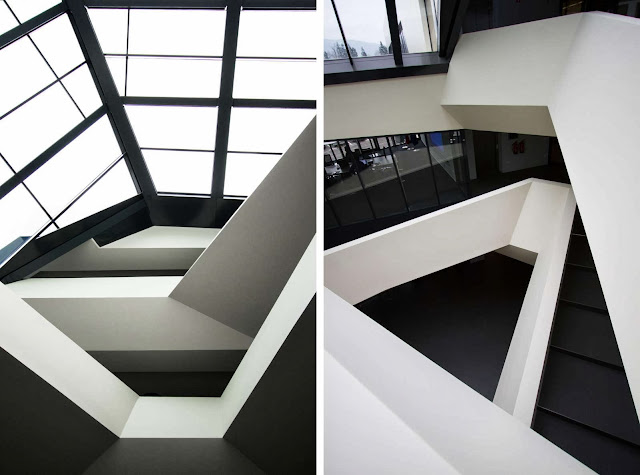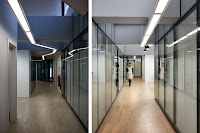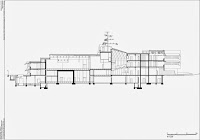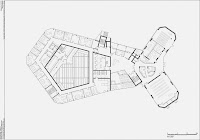The Air Traffic Control Centre is a highly demanding and complex object due to the nature of the institution it hosts. It is designed to enable safety and high operational activity as well as consistent comfort for visitors and staff 24 hours a day all year around.
The building is located in the middle of the plot mainly for the safety reasons. At the northern part it is separated from the edge by a parking platform and at the southern side by the high vegetation of the garden. The building consists of three parts: the central control space and two wings of offices and public spaces.
Within, the object is organized by five different levels of security zones with access control at each passage. The further one moves from the rim that holds administrative and rest areas towards the centre of the object, the greater the security level of the areas.
The Centre is an is operational 24 hours a day, every day of the year. The compact design also serves to enhance the operational efficiency of the object. The paths are short and manageable. The clear division into a pentagonal head and two wings provides easy orientation within.
The head and the wings are connected by a central area, the vertical hall. It is a multi-leveled area with an entrance lobby, canteen, conference room and gym. It is an area for meeting, informal socializing and communication. At the ground floor level in the wings there is a large conference room and two study rooms, while above them on two levels are the Centre's administrative areas.
The day and night rest areas are wrapped around the control area at the southern side of the first and second level. With correct orientation of the interior, suitable overheating protection and installation systems design for the use of renewable energy sources (geothermal energy), the compactness of the object also allows for a good energy performance certificate.
The diversity of colour and material treatment of interior ambients, the design of spaces within the vertical hall all stimulate work comfort with their character nd contribute to the efficiency of the time behind the controls desk. The Centre appears as a monolithic shell, which opens towards outside only when and where it's necessary.
The whole building is wrapped in belts of glazing and combined aluminium parapets and brise-soleil that regulate the intensity of heat and light transmission to the interior. The slope and the size of the brise-soleil are determined by the layout of the windows and the intensity of solar radiation related to it.
The height of the parapet is determined by the interior of individual areas and the related wish for greater or lesser openings for views. The windows are made of bronze reflective glass mirroring the mountains in the surrounding. The beige and bronze colour coding of the façade visually reflects the building's character of security and protection.
The roof is designed with a flat roof system that rises in terraces, thus continuing the play of blinds and parapets on the facade. With its shape, the roof provides daylight to the interior areas, especially to the control room in the pentagonal 'head' of the object.
Location: Airport Brnik, Slovenia
Architect: SADAR + VUGA
Project Team: Jurij Sadar, Boštjan Vuga, Tomaž Krištof, Aleksandar Lalić, Miha Čebulj, Špela Štern
Site area: 7996 m2
Building area: 2350 m2
ATTC: 8.320 m2
Garage: 2.978 m2
Year: 2013
Client:Slovenian Air Navigation Services, Ltd.



















